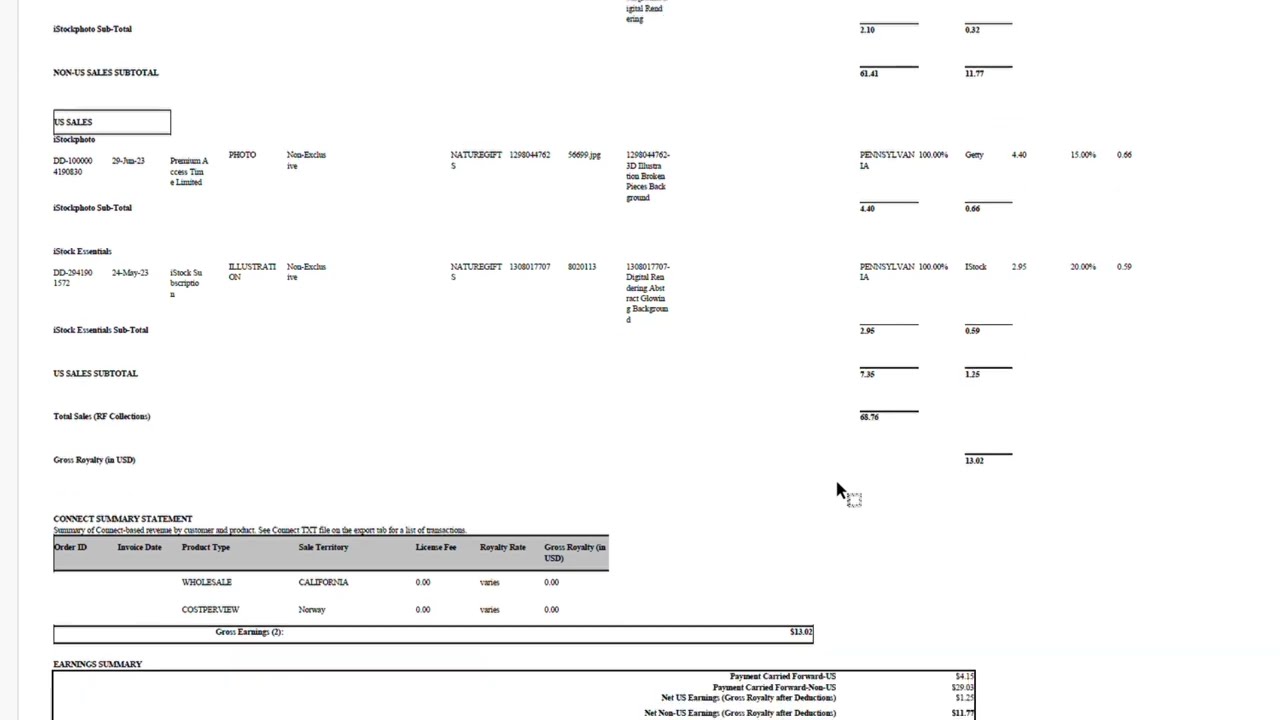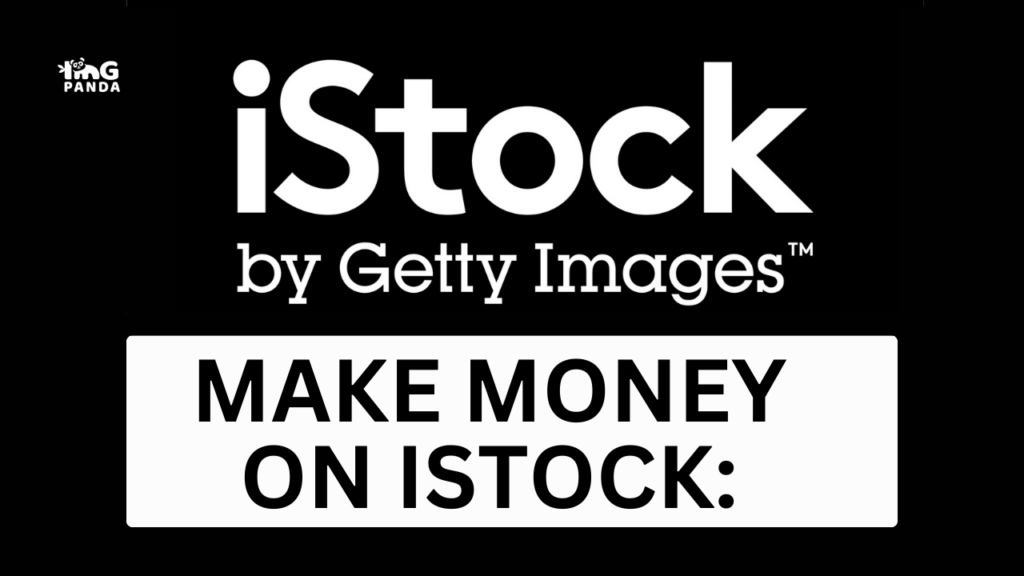If you’re a photographer or an artist looking to monetize your creative talents, Getty Images could be a fantastic avenue to explore. With a vast reach and a reputable name in stock photography, Getty Images provides photographers with the opportunity to sell their work to a global audience. Not only can you earn money, but you can also gain exposure by showcasing your images on one of the biggest platforms in the industry. In this guide, we’ll walk you through the essential steps to successfully sell your images on
Understanding the Getty Images Marketplace

Before diving into selling your images, it’s crucial to grasp how the Getty Images marketplace operates. This understanding will empower you to maximize your earnings effectively. Let’s break down some key aspects:
- Categories and Types of Images: Getty Images hosts a wide variety of image categories—everything from editorial images, lifestyle, and food photography to more niche options like aerial shots and illustrations. Knowing where your work fits in can help you target your uploads effectively.
- Licensing Options: Getty Images primarily offers two types of licenses: Royalty-Free (RF) and Rights Managed (RM). RF allows customers to use your images multiple times for various purposes, while RM restricts use based on specific terms. Familiarizing yourself with these options can help you decide how to price your images.
- Quality Standards: Getty Images has high-quality standards for image submissions. This means your images must be technically sound and well-composed. Investing time in post-processing can significantly enhance your chances of acceptance.
- Trends and Demand: Keep an eye on emerging trends and popular subjects within the marketplace. Seasonal events, cultural phenomena, and emerging styles can guide your photography sessions, ensuring you create in-demand content.
- Competitive Analysis: It’s beneficial to look at existing top sellers on Getty Images. Analyze their portfolios to identify what works—be it themes, colors, or subjects. This can inspire your own creative process.
By understanding these facets of the Getty Images marketplace, you’ll position yourself strategically to succeed and earn more from your photographic endeavors.
Also Read This: Creating a Getty Images Account to Start Selling Your Photos
Preparing Your Images for Submission

Getting your images ready for submission is a crucial step in the process of selling on Getty Images. Proper preparation can significantly boost your chances of acceptance and increase your earnings. Here’s what you need to focus on:
- Image Quality: Always shoot in high resolution. Getty Images accepts images that are at least 4 MB in size. Avoid using images with noise, blurriness, or any signs of over-editing.
- File Format: Submit your images in JPEG format, which is the preferred format for online stock images. Make sure your files are appropriately cropped and saved to a suitable quality.
- Metadata: Metadata includes the title, description, and keywords related to your image. Provide clear and descriptive metadata that accurately conveys your content. This helps users find your images when searching.
- Model and Property Releases: If your images feature identifiable people or private property, ensure you have the appropriate releases. This adds value to your submissions and broadens their marketability.
- Compliance with Guidelines: Familiarize yourself with Getty Images’ submission guidelines. Adhering to their requirements will save you time and effort, ensuring a smoother approval process.
By carefully preparing your images and ensuring they meet these criteria, you’ll not only enhance your chances of acceptance but also increase the potential for sales. Take the time to review each image before you hit that upload button!
Also Read This: Can You Use a Lumix G Camera to Upload Photos to Alamy
Setting Competitive Prices for Your Work

Once your images are accepted, it’s time to think about pricing. Setting competitive prices is an essential part of maximizing your earnings on Getty Images. Here’s how to go about it:
- Research Market Rates: Look at similar images on Getty Images and analyze their pricing. This will give you a baseline to work from and help you understand what buyers are willing to pay.
- Understand Licensing Options: Getty Images offers different licensing models, including royalty-free and rights-managed. Familiarize yourself with these models and price accordingly. Royalty-free images generally have wider accessibility but may be sold for lower prices.
- Consider the Demand: If your images cover trending topics or unique subjects, consider pricing them higher due to their potential demand. Pricing can be influenced by factors such as exclusivity and the number of licenses already sold.
- Offer Bundles: Consider offering your images in bundles. This may encourage buyers to purchase multiple images at once, ultimately increasing your overall sales.
- Regularly Reassess Your Pricing: The market can be dynamic, so it’s vital to regularly reassess your pricing strategy. Adjusting prices can keep you competitive and help you capitalize on new trends.
By strategically setting your prices, you not only increase the appeal of your portfolio but also enhance your earning potential. Remember, the right price can make a big difference in how your work is received in the marketplace!
Also Read This: The Easiest Way to Post Youtube Video on Instagram With This Simple Tool
5. Best Practices for Metadata and Tagging

When it comes to selling your images on Getty Images, metadata and tagging are pivotal. Think of metadata as the bridge connecting your photos to potential buyers. Without accurate and thoughtful metadata, your images may be lost in the vast digital landscape.
Here’s how you can master metadata and tagging:
- Descriptive Titles: Create descriptive and relevant titles. Use keywords that describe the subject of your photo. For instance, instead of just "Sunset," you could use "Vibrant Sunset Over the Ocean at Dusk."
- Rich Descriptions: Provide detailed descriptions that elaborate on the context and subject matter. Highlight important elements, such as location, emotions, or the mood conveyed by the image.
- Keyword Optimization: Always include relevant keywords that potential buyers would search. Think like a customer! Use both broad terms and specific ones. For example, use “nature” as a broad keyword and “forest in autumn” for a specific search.
- Use of Categories: Select the appropriate categories for your images. This helps in organizing your portfolio, making it easier for buyers to find what they need.
- Geolocation: If applicable, include the location where the image was taken. This is especially useful for travel or landscape photography.
- Revisiting and Updating: Don’t be afraid to revisit and update your metadata as trends change or as you identify new keywords that could improve visibility.
In essence, think of your metadata and tags as a friendly map, guiding people right to your incredible images.
Also Read This: Becoming a Contributor on Getty Images: A Guide to Selling Your Images
6. Building Your Portfolio on Getty Images
Creating a compelling portfolio on Getty Images is like constructing a beautiful gallery—your images should not only be visually stunning but also well-curated to attract buyers. Here’s how to go about it:
- Diverse Range of Subjects: Include a variety of subjects in your portfolio. This could be landscapes, portraits, food photography, and more. The more diverse your collection, the broader your potential market.
- Quality Over Quantity: While it may be tempting to upload as many images as possible, focus on the quality. Ensure all images are high resolution and well-edited.
- Consistent Style: Establish a recognizable style or theme across your portfolio. This helps in creating a brand identity and may attract clients looking for a specific aesthetic.
- Regular Updates: Keep your portfolio fresh by regularly adding new images. This not only showcases your growth as a photographer but also keeps buyers engaged with your work.
- Engagement with Buyers: Pay attention to analytics provided by Getty Images. Find out what type of images garner interest and engagement, and tailor your portfolio accordingly.
- Networking: Connect with other photographers and influencers in the industry. Collaborations or exchanges of ideas can offer fresh perspectives and ideas for your portfolio.
Remember, building a portfolio takes time and dedication, but with the right approach, you’ll not only showcase your best work but also attract prospective buyers eager to invest in your images.
Also Read This: How to Edit Text in JPEG Images Online for Fast Updates
Marketing Your Images for Increased Exposure
Once you have uploaded your stunning images to Getty Images, the next crucial step is marketing! After all, what good are beautiful images if no one sees them? Marketing your images is not just about promoting but also about creating visibility and establishing a connection with potential buyers. Here’s how you can do it effectively:
- Leverage Social Media: Use platforms like Instagram, Facebook, and Twitter to show off your images. Share behind-the-scenes stories, post engaging captions, and use relevant hashtags to attract a wider audience.
- Create a Portfolio Website: Having a personal website can serve as a portfolio where you showcase your best work. Link it to your Getty Images portfolio, so visitors can easily find and purchase your images.
- Engage with Photography Communities: Join online forums and groups where fellow photographers and potential buyers might hang out. Sharing your knowledge can lead to connections that may drive sales.
- Email Marketing: Consider starting a newsletter. Regular updates about new images, sales promotions, and photography tips can draw interest in your work.
- Network with Influencers and Bloggers: Partnering with influencers can help amplify your reach. Offer them a free image in exchange for a shout-out or feature on their platforms.
In essence, think of marketing as a funnel where you consistently bring people in, engage with them, and ultimately convert them into loyal customers who appreciate your art.
Also Read This: How VectorStock Fuels Creativity and Innovation for Designers
Monitoring Your Sales and Performance
Once your images are out there and the marketing wheels are turning, it’s time to keep an eye on how well they’re performing. Monitoring your sales and performance is crucial to understanding what's working and where you can improve.
Here are some helpful strategies for keeping track:
- Access Getty’s Analytics Dashboard: Getty Images provides an analytics dashboard that tracks the number of views, downloads, and earnings. Regularly check these metrics to gauge which images perform best.
- Track Your Earnings: Make a habit of reviewing your sales figures often. Understanding seasonal trends can help you capitalize on tracking images that sell well during specific times of the year.
- Listen to Buyer Feedback: Occasionally, buyers leave reviews on your images. Pay attention to this feedback; it’s invaluable for making adjustments in your photography or marketing strategies.
- Keep an Eye on Trends: Stay updated on current design and photo trends. Images that resonate with current events or popular culture typically see more sales.
- Adjust Your Marketing Strategies: If you notice that certain marketing tactics lead to more sales, double down on those methods. Conversely, if something isn’t working, don’t hesitate to change it up!
By regularly monitoring your sales and performance, you can make informed decisions that enhance your potential for maximum earnings on Getty Images. Remember, it’s all about adapting and refining your approach!
How to Successfully Sell Your Images on Getty Images for Maximum Earnings
Selling images on Getty Images can be a lucrative endeavor for photographers and artists alike. However, to maximize your earnings, you need a strategic approach. Here are key steps to help you succeed:
1. Understand the Market
Before diving in, familiarize yourself with what sells well. Research trending topics and popular styles, focusing on:
- Current events and news
- Seasonal content (holidays, seasons, etc.)
- Corporate and business images
- Authentic lifestyle images
2. Build a High-Quality Portfolio
Your portfolio is your calling card. Ensure that you:
- Upload images in the highest resolution possible
- Offer a variety of subjects and styles
- Regularly update your portfolio with fresh content
3. Optimize Metadata
Effective metadata helps your images get discovered. Focus on:
- Keyword selection: Use relevant and specific keywords
- Descriptive titles: Make them engaging and informative
- Categories: Assign images to appropriate categories
4. Market Your Images
Use social media and personal websites to drive traffic to your Getty Images portfolio. Consider platforms like:
| Platform | Purpose |
|---|---|
| Showcase visuals and engage with the audience | |
| Pin images to attract viewers | |
| Blog | Write about photography tips and feature your work |
5. Analyze and Adapt
Regularly review your sales data to understand what works. Adjust your strategies based on:
- Sales performance of each image
- Trends in user searches
- Feedback from buyers
Conclusion: Tips for Continuous Improvement
Continuously enhance your skills and portfolio by seeking feedback, attending workshops, and staying updated with industry trends. By remaining adaptable and intuitive to market changes, you'll consistently boost your earnings on Getty Images.
 admin
admin








